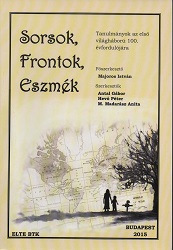„C’est la paix!” A Sixtus-levelek és Károly császár különbéke-kezdeményezése 1916-17-ben
„C’est la paix!” The Letters of Sixtus and the Initiation of a Separate Peace by the Emperor of Karl I of Austria in 1916-1917
Author(s): Tibor Frank
Subject(s): Diplomatic history, Political history, Pre-WW I & WW I (1900 -1919)
Published by: Eötvös Loránd Tudományegyetem, Új-és Jelenkori Egyetemes Történeti Tanszék
Keywords: World War I; separate peace; German-Austro-Hungarian relations in World War I; the Entente; Emperor Karl (Charles) I of Austria; Empress Zita (Princess Bourbon-Parma); Prince Sixtus of Bourbon-Parma;
Summary/Abstract: The Emperor Karl I of Austria (King Károly IV of Hungary) is remembered today in Hungary mostly for his staunch attempts at a forced retake of his Hungarian kingdom in 1921 which proved to be an abysmal failure. The Emperor, however, initiated a separate peace treaty with the Entente powers right after inheriting the throne from the Emperor Franz Joseph on November 21, 1916. His endeavour to lead Austria-Hungary out of the war was an important political decision, based on a sincere vision of world peace. The peace effort was carried out almost exclusively by the Emperor’s family, first and foremost by his brother-in-law Prince Sixtus of Bourbon-Parma. Executed in utmost secrecy, the peace plan involved the Empress Zita and her immediate family, as well as Count Tamás Erdődy, a childhood friend of the Emperor. The plan failed for a number of domestic and international reasons, but the Emperor deserves credit for his separate peace project of 1916-1917 which could have saved the Austro-Hungarian Monarchy, innumerable lives and, eventually, avert the peace treaties of St. Germain-en-Laye and Trianon. Partly for his peace efforts, the Emperor was beatified by Pope John Paul II in 2004
Book: Sorsok, frontok, eszmék. Tanulmányok az első világháború 100. évfordulójára
- Page Range: 105-113
- Page Count: 9
- Publication Year: 2015
- Language: Hungarian
- Content File-PDF

